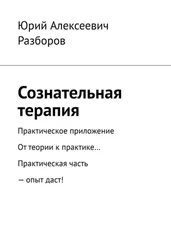Blatz W. (1940). Hostages to peace: Parents and the children of democracy. NY: Morrow.
Bodeewes T. (2002). Videogestützte Mikroanalyse des Interaktionsverhaltens zwischen Mutter und Säugling als Basis der frühen Sprachanbindung. Pediatrics and Related Topics, 41, 497–501.
Bokhorst C. L., Bakermans-Kranemburg M. J., Fearon R. M. P., van IJzendoorn M. H., Fonagy P. & Schuengel C. (2003). The importance of shared environment in mother–infant attachment security: A behavioral genetic study. Child Development, 74, 1769–1782.
Boszormenyi-Nagy I. & Spark G. (1973). Unsichtbare Bindungen. Die Dynamik familiärer Systeme. Stuttgart: Klett-Cotta.
Bowlby J. (1946). Forty-four junvenile thieves: Their characters and home life. International Journal of Psycho-Analysis, 19–52 und 107–127.
Bowlby J. (1949). The study and reduction of group tension in the family. Human Relations, 2, 123.
Bowlby J. (1951). Maternal care and mental health. World Health Organisation. Monographs Series No. 2. Dt.: (1973a). Mütterliche Zuwendung und geistige Gesundheit. München: Kindler.
Bowlby J. (1953). Child care and the growth of love. London: Penguin Book. Dt.: (1995a). Mutterliebe und kindliche Entwicklung. München: Reinhard.
Bowlby J. (1958). The nature of the child’s tie to his mother. International Journal of Psycho-Analysis, 39, 350–373.
Bowlby J. (1960a). Grief and mourning in infancy and early childhood. The Psychoanalytic Study of the Child, 15, 9–52.
Bowlby J. (1960b). Separation anxiety. International Journal of Psycho-Analysis, 41, 313–317.
Bowlby J. (1969). Attachment and loss. V. 1. Attachment. NY: Basic Books. Dt.: (1975). Bindung. Eine Analyse der Mutter-Kind-Beziehung. München: Kindler.
Bowlby J. (1973b). Attachment and loss. V. 2: Separation. Anxiety and Anger. NY: Basic Books. Dt.: (1976). Trennung. Psychische Schäden als Folge der Trennung von Mutter und Kind. München: Kandier.
Bowlby J. (1980). Attachment and loss. V. 3: Loss, sadness and depression. NY: Basic Books. Dt.: (1983). Verlust – Trauer und Depression. München: Kindler.
Bowlby J. (1988). A secure base: Clinical implications of attachment theory. London: Routledge. Dt.: (1995b). Eltembindung und Persönlichkeitsentwicklung. Therapeutische Aspekte der Bindungstheorie. Heidelberg: Dexter.
Bowlby J., Robertson J. & Rosenbluth D. (1952). A two-year-old goes to hospital. The Psychoanalytic Study of the Child, 7, 82–94.
Bowlby R. (2009). Das Londoner Modell der bindungsorientierten Tagesbetreuung: Hintergrund. In: К. Н. Brisch & Т. Hellbrügge (Hrsg.). Wege zu sicheren Bindungen in Familie und Gesellschaft. Prävention, Begleitung, Beratung und Psychotherapie. Stuttgart: Klett-Cotta, 213–224.
Braun K. (1996). Synaptische Reorganisation bei frühkindlichen Erfahrungsund Lernprozessen: Relevanz für die Entstehung psychischer Erkrankungen. Zeitschrift für Klinische Psychologie, Psychiatrie und Psychotherapie, 44, 253–266.
Braun K., Lange E., Metzger M. & Poeggel G. (2000). Maternal separation followed by early social isolation affects the development of monoaminergic fiber systems in the medial prefrontal cortex of Octodon degus. Neuroscience, 95, 309–318.
Braun К., Helmeke С. & Воск J. (2009). Bindung und der Einfluss der Eltem-Kind-Interaktion auf die neuronale Entwicklung präfrontaler und limibischer Regionen: Tierexperimentelle Befunde. In: K. H. Brisch & T. Hellbrügge (Hrsg.). Wege zu sicheren Bindungen in Familie und Gesellschaft. Prävention, Begleitung, Beratung und Psychotherapie. Stuttgart: Klett-Cotta, 52–78.
Bretherton I. (1995). Attachment theory and developmental psychopathology. In:
D. Cicchetti S. Toth (Hrsg.). Emotion, cognition and representation. Bd. 6. Rochester, NY: University of Rochester Press, 231–260.
Bretherton I. (1998). The development of internal working models of attachment. Development, Structure, and Functioning of Internal Working Model. Symposium Universität Regensburg, 6–7 Juli.
Bretherton I., Oppenheim D., Buchsbaum H. & Emde R. N. (1990a). The MacArthur Story Stem Battery (MSSB). Unveröffentl. Manual. University of Wisconsin, Madison (MacArthur Narrative Group).
Bretherton I., Prentiss C. & Ridgeway D. (1990b). Chidren’s representations of family relationships in a story completion task at 37 and 54 months. In: I. Bretherton & M. Watson (Hrsg.). Children’s perspectives on the family: 48. San Francisco: Jossey-Bass, 85–105.
Bretherton I., Ridgeway D. & Cassidy J. (1990c). Assessing internal working models of the attachment relationship: An attachment story completion task for 3-yearolds. In: M. T. Greenberg, D. Cicchetti & E. M. Cummings (Hrsg.). Attachment in the preschool years, Chicago: The University of Chicago Press, 273–310.
Bretherton I., Page T. & Golby B. (1997). Narratives of preschoolers from postdivorce families: Gender differences and maternal style. Biennial Meeting of the Society for Research in Child Development: The MacArthur Story Stem Battery: A new tool for research on children’s emotions and relationships, Washington, DC, April 1997.
Brisch K. H. (1995). Feinfühligkeitstraining für werdende Eltern. Kongress Sozialpädiatrie Universität, München, 03. November 1995.
Brisch K.H. (1998a). Development of infantile anorexia nervosa and its psychotherapeutic treatment. Int. Conference: «The treatment of eating disorders. Research meets clinical practice», Stuttgart. 11.–13. Juni 1998.
Brisch K. H. (1998b). Die Bedeutung der Psychodynamik im Rahmen der pränatalen Fehlbildungsdiagnostik. Speculum, 16 (1), 23–31.
Brisch K. H. (1999). Familiäre Bindungen – Die transgenerationale Weitergabe familiären Bindungsverhaltens. In: E. Reinke (Hrsg.). Psychoanalyse der Familie. Gießen: Psychosozial-Verlag, 7–16.
Brisch K. H. (2000). The use of the telephone in the treatment of attachment disorders. In: J. Aronson (Hrsg.). Use of the telephone in psychotherapy. NJ: Aronson, 375–395.
Brisch K. H. (2002a). Fragebogen zur Bindungsentwicklung von Kindern. Unveröffentl. Fragebogen. München (Abt. Pädiatrische Psychosomatik und Psychotherapie, Kinderklinik und Kinderpoliklinik im Dr. von Haunerschen Kinderspital, Ludwig-Maximilians-Universität München).
Brisch K. H. (2002b). Hyperaktivität und Aufmerksamkeitsstörung aus der Sicht der Bindungstheorie. In: G. Bovensiepen H. Hopf & G. Molitor (Hrsg.). Unruhige und unaufmerksame Kinder. Psychoanalyse des hyperkinetischen Syndroms. Frankfurt/M.: Brandes & Apsel, 45–69.
Brisch K. H. (2002c). Klassifikation und klinische Merkmale von Bindungsstörungen. Monatsschrift für Kinderheilkunde, 150, 140–148.
Brisch K. H. (2002d). Psychotherapeutische Intervention für Eltern mit sehr kleinen Frühgeborenen: Das Ulmer Modell. In: B. Strauss, A. Buchheim & H. Kächele (Hrsg.). Klinische Bindungsforschung. Theorie-Methoden-Ergebnisse. Stuttgart, NY: Schattauer, 191–195.
Brisch K.H. (2004a). Der Einfluss von traumatischen Erfahrungen auf die Neurobiologie und die Entstehung von Bindungsstörungen. Psychotraumatologie und Medizinische Psychologe, 2, 29–44.
Brisch K. H. (2004b). Stönmgsspezifische Diagnostik und Psychotherapie von Bindungsstörungen. In: U. Lehmkuhl & G. Lehmkuhl (Hrsg.). Frühe psychische Störungen und ihre Behandlung. Göttingen: Vandenhoeck & Ruprecht, 135–152.
Brisch K. H. (2005). Die Bindungsentwicklung von sehr kleinen Frühgeborenen mit einem Geburtsgewicht £ 1,500 Gramm. Prospektive Längsschnittstudie. Unveröffentl. med. Habilitationsschrift. München; Kinderklinik und Poliklinik im Dr. von Haunerschen Kinderspital, Abteilung Pädiatrische Psychosomatik und Psychotherapie, Ludwig-Maximilians-Universität München.
Brisch K. H. (2006). Disorganized attachment quality in very low birthweight pre-term infants and postnatal neurobiological risk. Infant Mental Health Journal, 27 (3A), 9–10.
Читать дальше
Конец ознакомительного отрывка
Купить книгу






